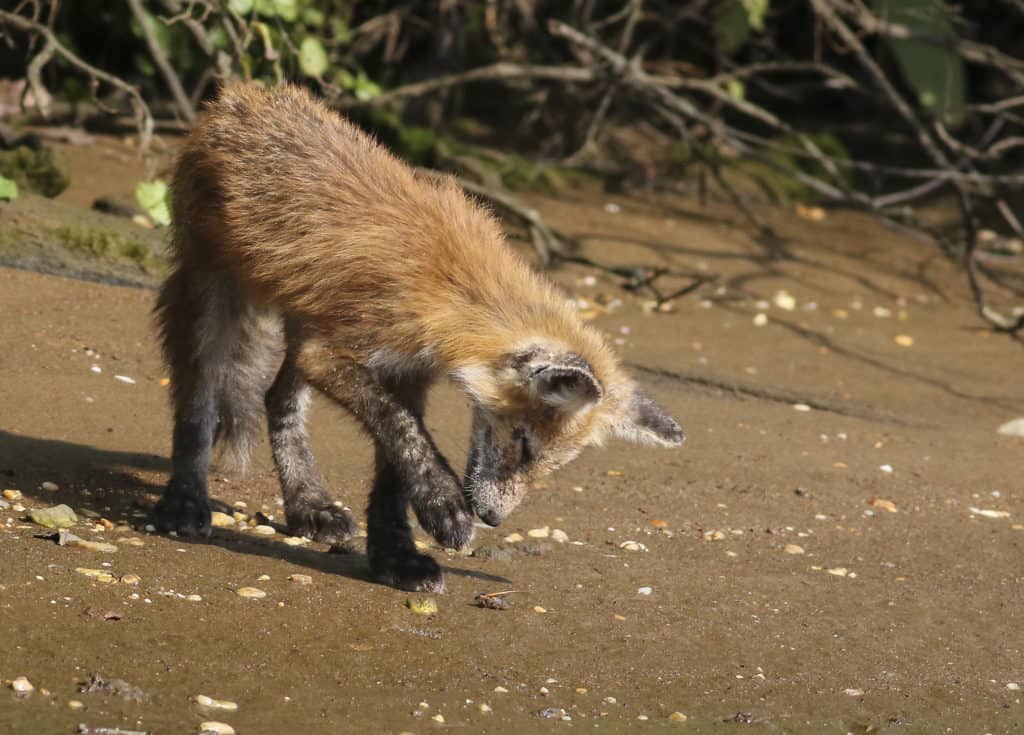Creature Feature

Cicada Aftermath
By Wayne Bierbaum
Last weekend, while driving through the Maryland countryside, I could see areas where trees had browning twigs—evidence of where cicada eggs were laid. Only the ends of the branches were affected and I did not see any trees that looked severely damaged. I would guess that the loss of these twigs could stimulate the tree to branch more which could be a good thing.
I was told of several unusual episodes involving the cicada brood this year. Several people who live in the county saw black rat snakes so full of cicadas that they could barely move. I did not find out if the snakes survived.
There also were discoveries of owl pellets loaded with cicada parts instead of the usual hair and bones from small mammals. Fox, raccoons and possum scat were also found to contain large amounts of cicadas. I personally saw squirrels, foxes, northern cardinals, blackbirds, grackles, crows and hawks eating cicadas.
I earlier wrote about how unusual bird species would come to our area while following the Brood X. On May 27, I saw three Mississippi kites at once make low passes over trees in Owensville. Kites reportedly made a nest in Rockville and apparently the eggs have hatched.
I also saw a common nighthawk flying around over the South River catching and eating cicadas. The most unusual thing about that sighting was that it happened in the middle of the day.
The recent bird illness CBM Bay Weekly reported on seems to have occurred at the same time of the cicada emergence. The illness appears to receding which corresponds to the end of the Brood X adult lifespan. Since the illness does not completely match the regions of cicada emergence and was first recognized in April— before the emergence—the illness does not completely match Brood X. Researchers so far have not been able to find any infectious disease as the cause.
The illness causes a neurological illness and crusty eyes with apparent blindness. It seems to affect young birds more than adults. It has been noted that the cicadas lived for 17 years underground with potential exposure to pesticides and other toxins as well as unique infectious diseases from fungus.
If you see an ill or dead bird, call the hotline for reporting the sighting: DNR/ USDA Wildlife hotline at 877-463-6497.
Editor’s Note: CBM Bay Weekly has been following this story and received the following update from Maryland DNR.
In late May, wildlife managers in Washington D.C., Maryland, Virginia, West Virginia, and Kentucky began receiving reports of sick and dying birds with eye swelling and crusty discharge, as well as neurological signs. More recently, additional reports have been received from Delaware, New Jersey, Pennsylvania, Ohio, and Indiana. While the majority of affected birds are reported to be fledgling common grackles, blue jays, European starlings, and American robins, other species of songbirds have been reported as well. No definitive cause(s) of illness or death have been determined at this time. No human health or domestic livestock and poultry issues have been reported.
The natural resource management agencies in the affected states and the District of Columbia, along with the National Park Service, are continuing to work with diagnostic laboratories to investigate the cause(s) of this event. Those laboratories include the USGS National Wildlife Health Center, the University of Georgia Southeastern Cooperative Wildlife Disease Study, the University of Pennsylvania Wildlife Futures Program, and the Indiana Animal Disease Diagnostic Laboratory.
The following pathogens have not been detected in any birds tested, based on results received to date: Salmonella and Chlamydia (bacterial pathogens); avian influenza virus, West Nile virus and other flaviviruses, Newcastle disease virus and other paramyxoviruses, herpesviruses and poxviruses; and Trichomonas parasites. Transmission electron microscopy and additional diagnostic tests, including microbiology, virology, parasitology, and toxicology, are ongoing.
Birds congregating at bird feeders and bird baths can transmit diseases to one another. Therefore, the state and District agencies recommend the public cease feeding birds until this wildlife morbidity/mortality event subsides.
